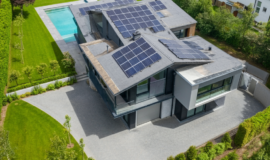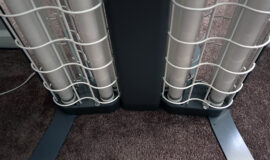Half Is More – Half Cell Modules
The PV industry keeps developing new PV panels with a higher output, greater efficiency and lower price. New panel ideas immediately get a reputation in the solar world. The newest technology that has gained a good reputation recently is half-cell designs. But what are half-cell modules?
Half-cell PV modules or split-cell PV modules, as the name indicates, are PV modules that have cells that are cut in half using a laser cutter. This enables higher performance and durability of the PV module. As suppose to the traditional photovoltaic panels who have either 60 or 72 cells, these PV modules have 120 or 144 half-cut cells, respectively. This type of modules is considered to be an upgrade of the traditional PV module, and in this article, we are going to see why.
As we said before, the half-cut module has 120 or 144 half-cut cells instead of 60 or 72 complete cells, but it has nearly the same dimensions as a standard PV module, without changing the mounting or tracking system. The cells are cut in two equal pieces, which increases the efficiency of the whole panel and reduces internal resistance. Since the power and with that the power loss, is proportional to the square of the current, the power loss in the panel is reduced by a significant factor. With that, the complete system power loss is significantly reduced as well.
Once the split-cells have been connected in strings, the solar panel is laid out in two sections with an equal number of cells in each part. This innovative solution also uses five busbar cells and split junction boxes.
Another advantage that half-cell modules have to the regular PV panels is that they perform better under shade impact. Instead of 3 panel cell strings, these modules have 6 panel cell strings thus making it a 6 string panel. Due to the bypass diodes, partial shading on the panel caused by, let’s say a leaf, or bird droppings, will knock one cell string out of action, but not affect the others. Since the half-cell modules have more strings, it results in a lower shading effect. In conclusion, the position of the bypass diodes and innovative wiring methods enable half-cell modules to perform better under partial shadow conditions.
Traditional solar panels have only one junction box from which the cables come out and it is located on the back of the panel. Compared to that, half-cut cell modules have three smaller junction boxes, placed in the middle of the panel and the cables come out of the first and third one. This has presented new challenges and opportunities for PV system installers.
The first split-cut cell solar panels were produced in 2014, by the company REC Solar. Since then, half-cut solar panel production has severely increased. Apart from REC, many other companies have introduced this technology as well. Some of the manufacturers of this type of solar panels are: JA SOLAR, LONGI Solar, Trina Solar etc.
Half-cell solar panels have gained a solid reputation in the solar market and will continue to influence how installers and developers approach new innovations.





